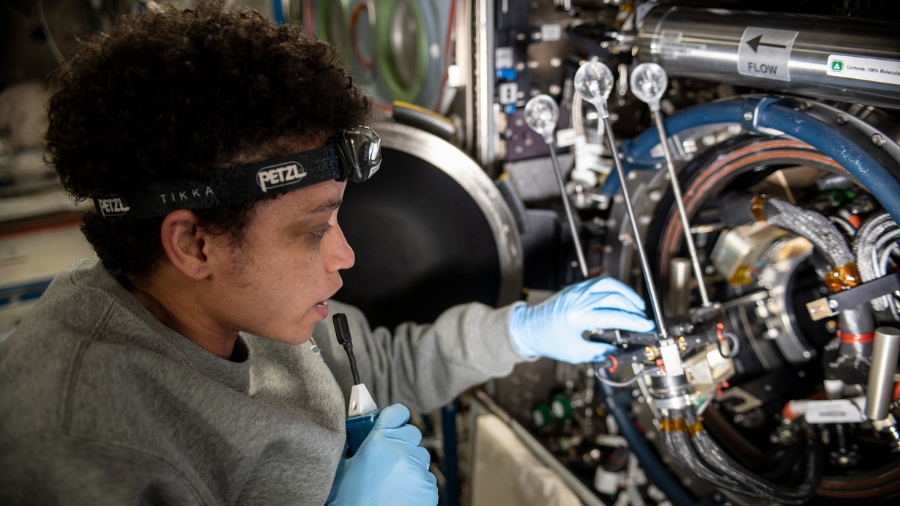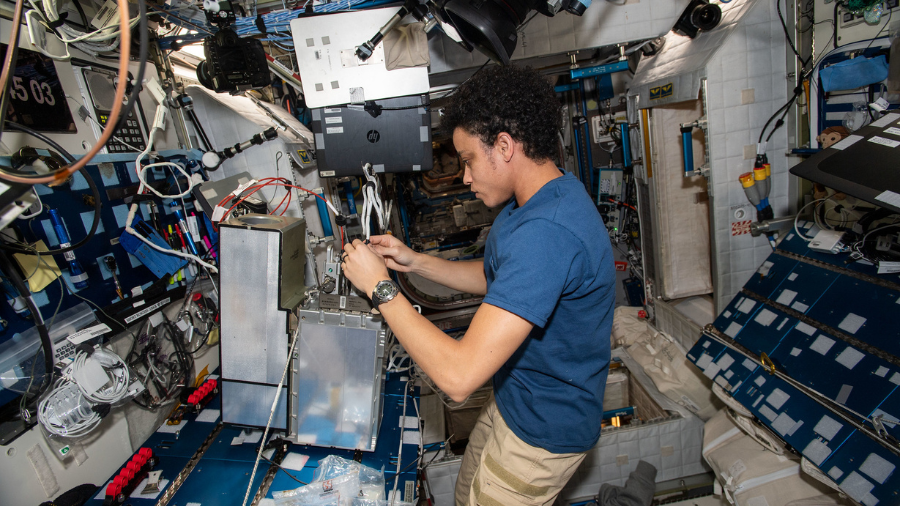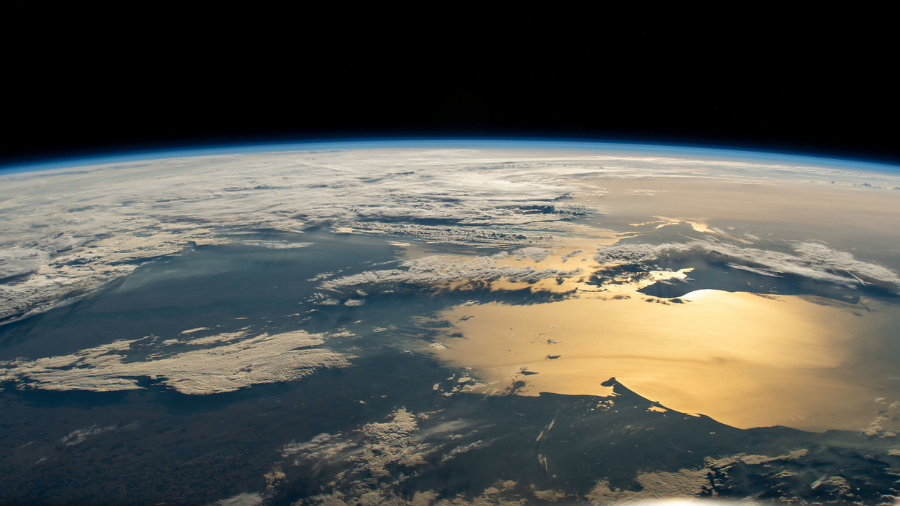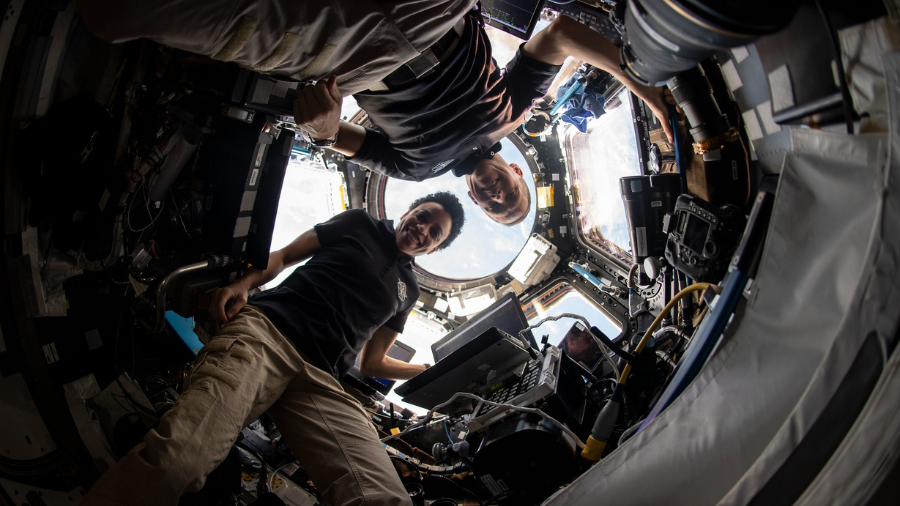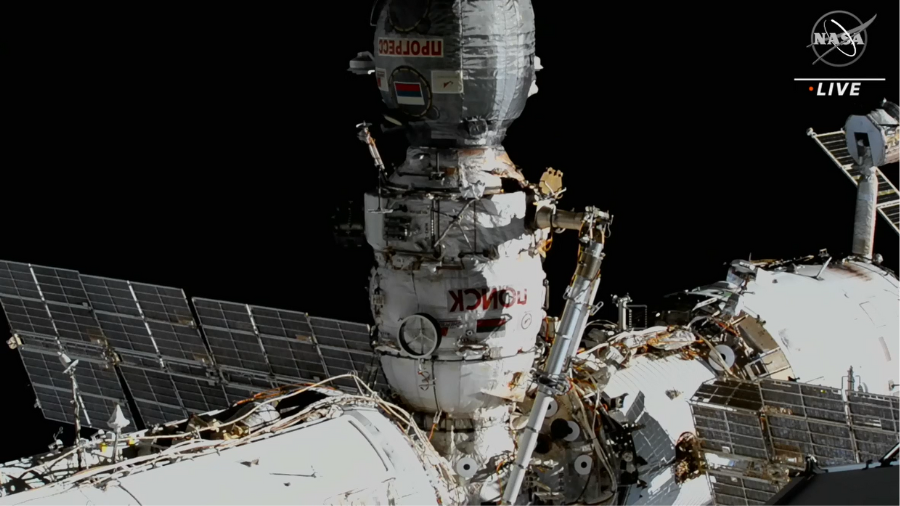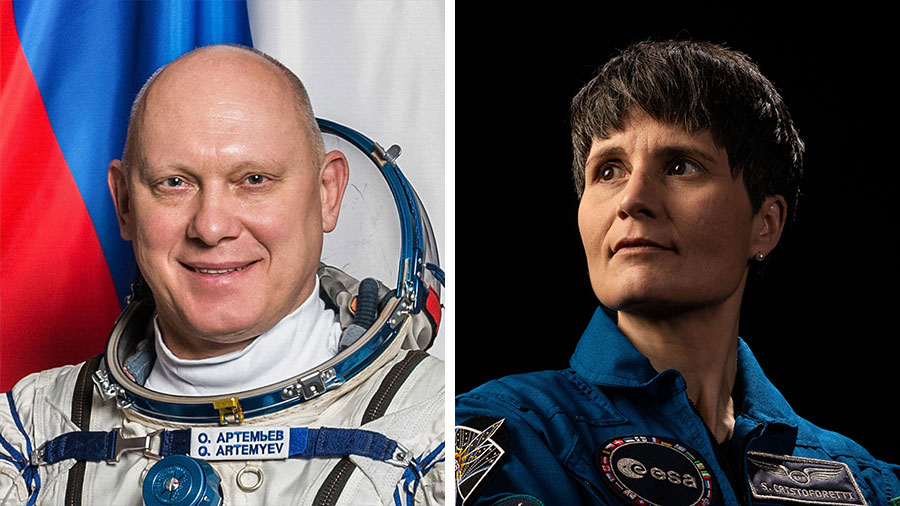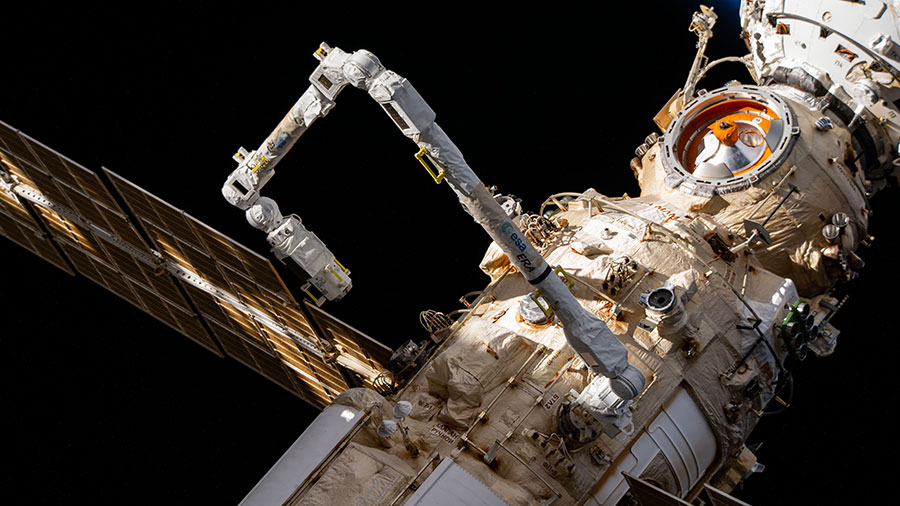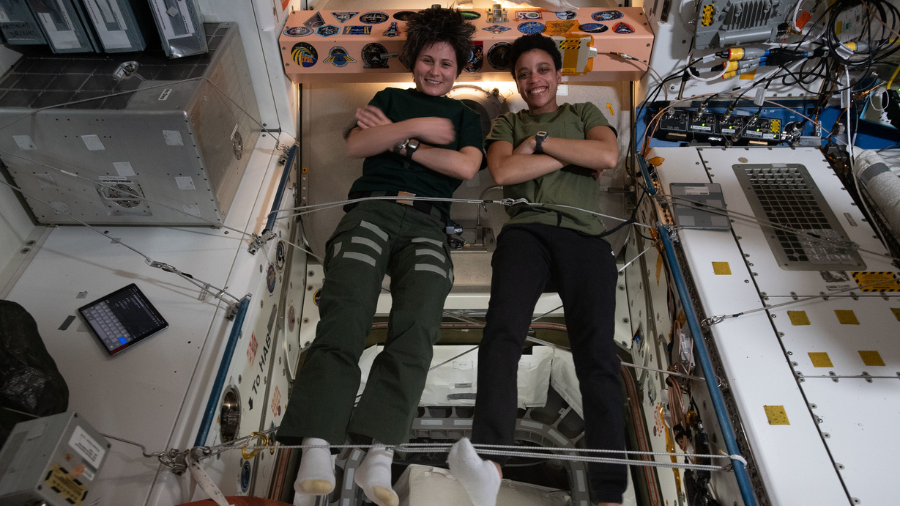
The Expedition-67 crew members focused on maintenance checks, exercise, and space research as part of their activities aboard the International Space Station today.
NASA Flight Engineer Kjell Lindgren concluded a busy work week by transferring cargo from the SpaceX CRS-25 Dragon spacecraft and completing a fitness test on the exercise cycle. He attached sensors to his chest and pedaled for an hour on the Cycle Ergometer with Vibration Isolation and Stabilization (CEVIS) device. Following a heavy cardio session, Lindgren used the Tranquility module’s advanced resistive exercise device (ARED) to perform exercises such as bench presses, squats, and deadlifts. He spent the latter part of his day installing the Extravehicular Mobility Unit (EMU) 3015 for return into the launch enclosure of the SpaceX CRS-25 Dragon spacecraft.
NASA Flight Engineer Jessica Watkins focused her day on performing maintenance tasks. Watkins checked out the newly installed In-Flight Refill Units (IRU) on the spacesuits, also known as the Fluid Pumping Unit. She removed and replaced the IRU and dumped water from the tanks inside the spacesuits.
Meanwhile, NASA Flight Engineer Bob Hines wrapped up his work week with space research. He studied the effectiveness of detergents in microgravity.
ESA (European Space Agency) Flight Engineer Samantha Cristoforetti collected air samples to demonstrate analyzing trace atmospheric contaminants using the ANITA-2 (Analyzing Interferometer for Ambient Air-2) device. Cristoforetti also conducted maintenance checks and transferred supplies from the Dragon spacecraft. As part of her maintenance duties, she worked in the Material Science Laboratory and took necessary steps to remove the processed Low Gradient Furnace (LGA) Sample Cartridge Assembly (SCA) and installed the next SCA that will be processed.
Commander Oleg Artemyev of Roscosmos and cosmonaut Denis Matveev took turns working out on the VELO ergometer bike. Cosmonaut Sergey Korsakov spent his day inspecting the brakes on the European Robotic Arm manipulator.
Learn more about station activities by following the space station blog, @space_station and @ISS_Research on Twitter, as well as the ISS Facebook and ISS Instagram accounts.
Get weekly video highlights at: http://jscfeatures.jsc.nasa.gov/videoupdate/
Get the latest from NASA delivered every week. Subscribe here: www.nasa.gov/subscribe


